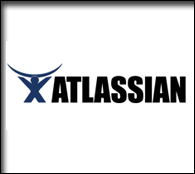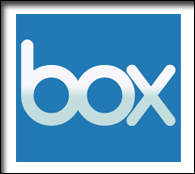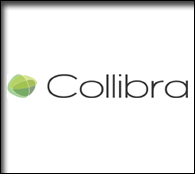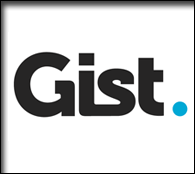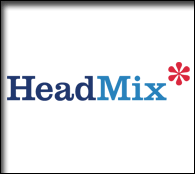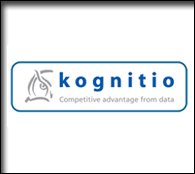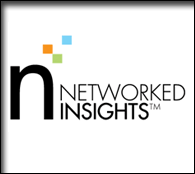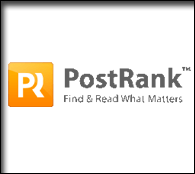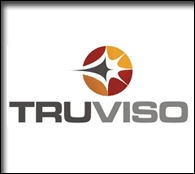Uncategorized
“Why don’t you move it to California?”
by Eric Norlin on Oct.27, 2010, under Uncategorized
It’s a question that I hear probably 6-8 times per “conference cycle” (ie, 6 to 8 times per year for every conference I run): “Why don’t you move Defrag to California?”
Now admittedly, my personality bristles a bit at the suggestion. Over the years, I’ve tried to find ways to stay calm — but I’ll admit that “calm” is a relative term (I remember yelling obscenities at my computer when I heard Mike Arrington say “if you’re serious, you move to the valley”; incidentally, this was shortly before he moved *from* the valley to WA. I guess he’s not “serious.”). So, yea, I probably still snap a bit when someone implies that Defrag would be “better” somehow if we moved it to California. And, in the interest of having something to point to in the future, and explaining publicly why I will NOT move it to California (hint: it’s better in Colorado), I thought I’d explain things a bit.
Sidenote: Before I do — my favorite corollary to “why don’t you move it to California?” is “we only sponsor conferences in the Bay Area.” To which I always reply: “Really? Do you only sign up customers in the Bay Area, too?”
So - why…
1. I do not think that all innovation comes from the Valley: Boulder is the perfect (and currently “hot”) example of that. But it’s certainly not the only one — Austin, Raleigh-Durham, Minneapolis-St. Paul — so many places in this country produce so many great examples of innovation. Valley-centricity is just silly.
2. Our attendees aren’t all from the Valley: The common mistake of conference organizers is to place their conferences where the majority of their *sponsors* are located (traditionally, the valley). But that assumes that you think your sponsors are your customers. And everyone who knows what they’re doing in conferences knows that your primary customer is actually your *attendee* NOT your *sponsor*. When you mix up the equation, you get bad content, bad interactions and a conference that doesn’t last. So, while a lot of our sponsors may be valley-based, our attendees (the REALLY important people) aren’t. In fact, they’re spread pretty evenly across the country (about 50% east and 50% west of the ole miss, the old man, the old river…). Ergo, locating the show in the valley doesn’t make sense for at least HALF of our customers.
3. It’s a better experience when it’s not in the Valley: Have you ever been to a conference at a convention center in or around the valley? You get what I refer to as the “drive-by conference attendee/speaker.” The person that “stops-by” for their talk, or one or two sessions and then “heads back to the office” or “goes to a few meetings.” The conference is almost a distraction in their calendar. THAT is not conducive to a truly good networking experience at a conference. Truly good networking at a conference occurs when the attendees arrive at a location and stay there for two (maybe even three) days. Conversations aren’t 3 minute snippets in the middle of an expo hall. They’re 90 minute threads that have the chance to develop, ferment and be revisited.
4. Travel is good for the soul: Let’s say you’re not from Colorado. Have you ever noticed how just going to a different place/setting can seem to open up your mind to things you’d never thought before? Voila. Defrag. (Oh, by the way, the resort we’re at rocks. Come stare at some mountains.)
Good for innovation. Good for attendees. Good for the overall experience. Good for your soul. That about sums it up.
Could I “grow” Defrag if I moved to the Valley? Probably. But honestly, we’re about quality of networking, not quantity of people.
And I’m happy staying that way. ![]()
I hope you’ll join us.
Cutting through the Weirdness
by Eric Norlin on Oct.26, 2010, under Uncategorized
Is it me, or does it just feel *weird* this morning? TIPS bonds (inflation-indexed gov’t bonds) are selling at a negative yield (i.e., buyers are betting on an unexpected and sudden jump in inflation), there’s a hurricane-sized storm barreling into the midwest (at least if measured by millibars of low pressure), and Digg’s laying off 37% of it’s staff to the tune of sharks in the water trying to hire every last one of them. Meanwhile, spending on enterprise software seems to be popping, and the silly season for tech conferences (e2.0, web2.0 summit — oh, and that little powerhouse called “defrag”) is hitting.
…just….weird.
Here’s what I know: I can’t count the number of times a Defrag speaker in the past has raised a topic as “crucial” (Kessler’s economic talk, Maggie Fox on stigmergy, Activity Streams, App marketplaces, the list goes on and on) only to see it become a major force in about 12-14 months time. It’s almost scary.
So, what’s coming in 22 days at Defrag? I wish I could say. You can read the broad topics — but that’s not where you’ll find the “predictions.” The really valuable stuff comes in the weak ties that sit between the sessions — in the unspoken connections that get made (both person to person and between streams of thought). It’s why I say, “you can’t know defrag, until you’ve been to defrag.” It’s why streaming the event wouldn’t do the event justice (no, we’re not live streaming it). It’s why you just need to come and see for yourself.
Join us, and see if we begin to cut through the weirdness.
Dawn of a New Day
by Eric Norlin on Oct.25, 2010, under Uncategorized
I was reading Ray Ozzie’s blog this morning, and this struck me (quoting at length):
In 1939, in New York City, there was an amazing World’s Fair. It was called ‘the greatest show of all time’.
In that year Americans were exhausted, having lived through a decade of depression. Unemployment still hovered above 17%. In Europe, the next world war was brewing. It was an undeniably dark juncture for us all.
And yet, this 1939 World’s Fair opened in a way that evoked broad and acute hope: the promise of a glorious future. There were pavilions from industry & countries all across the world showing vision; showing progress: The Futurama; The World of Tomorrow. Icons conjuring up images of the future: The Trylon; The Perisphere.
The fair’s theme: Dawn of a New Day.
Surrounding the event, stories were written and vividly told to help everyone envision and dream of a future of modern conveniences; superhighways & spacious suburbs; technological wonders to alleviate hardship and improve everyday life.
The fair’s exhibits and stories laid a broad-based imprint across society of what needed to be done. To plausibly leap from such a dark time to such a potentially wonderful future meant having an attitude, individually and collectively, that we could achieve whatever we set our minds to. That anything was possible.
In the following years – fueled both by what was necessary for survival and by our hope for the future – manufacturing jumped 50%. Technological breakthroughs abounded. What had been so hopefully and optimistically imagined by many, was achieved by all.
And, as their children, now we’re living their dreams.
There’s something incredibly inspirational (even if a bit maudlin) in that statement. Look, I’m a notoriously late adopter when it comes to 99% of technology, and yet I run/own tech conferences focused on bleeding edge stuff. Why? Because I’m addicted to the dawn of a new day. Because optimism wins out (every time). Because I believe deep in my core that, for all of humanity’s inherent and unavoidable faults, we really are capable of innovation that often seems not-of-this-world.
So, sentimentality aside, Defrag is precisely about the dawning of new days; every day; over and over and over again. It’s why you won’t find case studies detailing what’s happening *right now* inside of an enterprise. And I think it’s why our audience is so unique.
Take Alex Moore of Baydin Software. If you haven’t heard Baydin’s tale of the $100k taxi ride - go read it (i’ll wait here). I asked Alex to come present at Defrag somewhere around 4 or 5 months ago — precisely because I didn’t get what he was doing, but I knew he had the “right level of craziness.” I love that Baydin got funded on a “taxi ride.” I love that they’re coming to Defrag. I’ll take that kind of on the edge thinking over “here’s how to integrate a compliance solution for your collaborative environment” case study every day of the week and twice on Sunday.
Here’s what been-to-every-Defrag attendee Ed Costello said recently:
I come to Defrag to be challenged on what I know to be true in technology today. I first came to Defrag entirely on a whim, based on a writeup on Brad Feld’s blog and the gut assessment: “this looks interesting.” From the very first keynote in 2007 when David Weinberger managed to cause quite a few people to moisten their eyes if not cry, to last year’s infuriating yet regrettably accurate talk by Andy Kessler on permanent restructuring of the American economy, I’ve been challenged to alter, shift, rethink, and reassemble my beliefs and ideas about how technology can be used by organizations, businesses, and society at large. Moreso than other technology conferences, Eric Norlin gathers a great collection of speakers who interact with the audience and become part of the entire experience — no “hit–and–run, drive–by, drop–in for twenty minutes then off to the next conference” speakers. Speakers challenge attendees and attendees are encourage if not required to challenge the speakers back. Defrag is forty-eight hours of intense conversation, dialogue and argument about what technology can do for us, what it is doing to us, and where it can potentially take us.
Right about this time every year, I wake up under the crushing weight of planning details for Defrag (3 weeks out) and I can barely see out of my detail-swamp long enough to feel the excitement of Defrag.
That’s not the case this year.
Unemployment (real unemployment) is 17%. A “dark juncture” is here. And at Defrag, we’re gonna innovate toward the dawn of a new day. Join us.
Defrag: Morning 2
by Eric Norlin on Oct.22, 2010, under Uncategorized
Having taken a look at day 1 of Defrag, I wanted to glance at morning 2.
Where day one’s morning keynotes were focused on culture and innovation, day two begins to lead us down roads of knowing, data and getting smarter.
We kick things off with David Weinberger, co-author of The Cluetrain Manifesto (among other titles). David was our lead-off keynote at the first ever Defrag, and he absolutely blew people away (anyone remember the poem from Rilke?). I’ve been saying that David’s going to talk about the “philosophy of knowing” — but honestly, I’m not sure what twisty passages David will lead us down. Whatever they are, I guarantee you’ll be thinking sideways at the end of this one.
After David, we move to one of my favorite brains - Paul Kedrosky. Paul’s been involved with Defrag (and putting up with me) since year 1. For the past few years, I’ve had Paul moderate some things, and every single time, I had people saying “we want more Paul!” Well, it only took me 3 years to learn that lesson (thankfully), so I bring you - MORE PAUL.
Paul asked me what he should talk about and I think I spouted something about the correlation between California highway accidents, furniture left roadside, and the success of data management in the enterprise. Or something. I have no ideas. He told me he was going to address, “Monkeys, Typewriters and Data” - and we’re running with that.
Post-Paul, we enter into a flow of talks that address user-generated submissions (Scott Porad from Cheezburger Network) — which should be incredible, as they get 20,000 submissions a DAY, and Scaling technology company culture (Dan Portillo). And then we hit Jeff Jonas.
If you don’t know Jeff - prepare yourself. Jeff sold his company (SRD) to IBM a while back, and he’s now a Chief Scientist at IBM. SRD was a company that Jeff built that helped Vegas casinos identify everything about people through *context*. And Jeff’s a master of “context.” Your head’s gonna be swimming as Jeff describes why “organizations are getting dumber, and IT’s to blame.”
And then, before lunch we get JP Rangaswami (always a favorite) talking about information as seen through the eyes of a foodie.
So there you have it: philosophy, monkeys and data, context and vegas, food.
Just another typical morning at Defrag ![]()
Join us.
Defrag: Afternoon 1
by Eric Norlin on Oct.21, 2010, under Uncategorized
Previously, I looked at the first morning of Defrag — a broad set of topics that zero in on culture and innovation.
Coming out of Lunch on Day 1, we have Dion Hinchcliffe addressing the Future of Social Analytics. This is a topic that’s near and dear to me, since Defrag attendees have been requesting more on analytics for two years (unfortunately, there hasn’t been more to give). In talking with Dion, I think we’re finally gonna get a look into the burgeoning social media analytics market — and specifically, how the lines between that and traditional business intelligence are now blurring. I. Can’t. Wait.
After that, we move into breakouts across three tracks: two that are organized by me, and one that is organized by the Enterprise Irregulars (yea! so glad they’re coming).
The first hour of breakouts explores Apps, Marketplaces and Platforms (the broad idea that a) things like email have become a platform; and b) the rise of the enterprise app marketplace is happening), Analytics and BI (specifically, the topic of measuring influence and collaborative analytics), and the rise of Social Platforms (in the EI track).
The second hour of breakouts digs into Harnessing the Intelligence of the Crowd (both for predicting the future, and using the crowd to make decisions), Visualizations and Big Data (how to build big data systems for visualizations on a shoestring budget and what the web of spam is looking like today), and an EI discussion about Moving to the Cloud.
The last raft of afternoon breakouts attacks Social Email, Linked Data and Search, Semantics and Activity Streams, Moving Social Networking beyond Blogs and Tweets, and How Go-to-Market Strategies are impacted by Platform Shifts.
The day’s content ends as we reconvene to hear Jeff Ma talk about Business Lessons from the World of Blackjack. If you don’t know Jeff’s work, you’re gonna love this one. He was the inspiration for the movie, “21″ (the guy who took Vegas for MILLIONS counting cards and using statistical analysis), and is the author of the the new book, “The House Advantage.” Apply statistics to business; make the right decision even when it doesn’t “feel” right; rinse, repeat.
Finally, calm your brain down at our evening reception (complete with open bar and appetizers), and then retire to the hotel bar for some intimate networking with your fellow defraggers.
You will be stimulated. You will be tired. You will be thinking, “there’s a whole second day to go?”
Join us.
Earn your Defrag XP
by Eric Norlin on Oct.20, 2010, under Uncategorized
If you’re a gamer, you’re familiar with earning “XP” (experience points). If you’re not familiar with it, your kids are probably staring at you right now and wondering why you’re so weird. Basically, you accrue XP by playing a game over time - and that XP is good for boosting the benefits associated with your character.
Next year is Defrag’s 5th year in existence. And I’m already dreaming up the special things we’re gonna do to commemorate it.
One of the things I’m going to do is figure out ways for people to earn “Defrag XP” — where by doing so, you’ll get invited to/access to some special activities at next year’s defrag. Like what? Oh, I dunno — our super-top secret golf outing the day before the show, or a very small dinner with some of our bigger keynote names, or an invite-only thing here, or a special discount there.
The only question is *how* do you earn Defrag XP. Well, I know of one way — attend the events we throw.
If you’ve been to other past Defrag’s, you’ve already earned some tremendous XP. We have some people that have been to every single Defrag (BIG XP). Hell, we have some people (John Minnihan, I’m looking at you!) who have been to every Defrag and every Glue (MASSIVE XP). Come to think of it, we even have some people (Ed Costell0), who have been to every Defrag, every Glue, and are already registered for Blur (we’re talking Overlord of Events XP).
Dave Fauth (another guy that’s got some good XP built up) has this to say about Defrag:
Defrag 2010 will be my third Defrag event. I attend because Defrag is a community of brilliant people who come together to think and be challenged about cutting-edge, large scale problems that aren’t normally discussed in a technical conference.Defrag breaks through your normal echo-chamber of thinking and stretches you to think in open, innovative and ways. The relationships I’ve made over the past three years continue to pay dividends as I come across new challenges in my day-to-day work. I look forward to catching up with those relationships and making new ones at Defrag.
So, what do you need to do to earn XP and begin accruing benefits for Defrag’s 5th anniversary party (even if you’ve never been to a Defrag before)? Start by attending this year. After that, look for messages, tweets and ideas from me that allow you to earn more. Then, when year 5 of Defrag hits — you’ll totally have the conference experience pwnd.
Open: The Ultimate Buzzword
by Eric Norlin on Oct.19, 2010, under Uncategorized
Yesterday morning, while exercising, I found myself thinking that I wanted to write a blog post about “open vs. closed” and how the whole argument (open source, openstack, open business models) had gotten so confused that the word “open” meant NOTHING anymore.
And then Apple released it’s earnings.
Apparently, I’ve got some sort of secret mind-meld happening with Steve Jobs that even I wasn’t aware of. Witness (quoting, in part):
Google loves to characterize Android as “open,” and iOS and iPhone as “closed”. We find this a bit disingenuous, and clouding the real difference between our two approaches. The first thing most of us think about when we hear the word “open” is Windows, which is available on a variety of devices. Unlike Windows, however, where most PCs have the same user interface and run the same apps, Android is very fragmented. Many Android OEMs, including the two largest, HTC and Motorola, install proprietary user interfaces to differentiate themselves from the commodity Android experience. The user’s left to figure it all out. Compare this with iPhone, where every handset works the same….
You know, even if Google were right, and the real issue is “closed” versus “open,” it is worthwhile to remember that open systems don’t always win. Take Microsoft’s “Plays For Sure” music strategy, which used the PC model—which Android uses as well—of separating the software components from the hardware components. Even Microsoft finally abandoned this “open” strategy in favor of copying Apple’s integrated approach with their Zune player, unfortunately leaving their OEMs empty-handed in the process. Google flirted with this integrated approach with their Nexus One phone.
In reality, we think the open versus closed argument is just a smokescreen to try and hide the real issue, which is, “What’s best for the customer – fragmented versus integrated?” We think Android is very, very fragmented, and becoming more fragmented by the day. And as you know, Apple strives for the integrated model so that the user isn’t forced to be the systems integrator. We see tremendous value at having Apple, rather than our users, be the systems integrator. We think this a huge strength of our approach compared to Google’s: when selling the users who want their devices to just work, we believe that integrated will trump fragmented every time.
Here’s the problem: I disagree with the underlying point Jobs is trying to make. So, let me take another swing at this.
1. “Open” is good. I love “open.” I’m all for “open.” The problem is that the word “open” has taken on so many emotional attachments that it’s now almost meaningless in actual conversation.
2. We can trace the importance of “open” back to open source and Eric Raymond (alright, you can go to Stallman if you want, but then we’re talking “free” not open). It used to be that being “open source” was a big deal. Now no one cares. Still, that was the beginning of “open vs. closed” — where “open” literally meant access to (and ability to edit) source code.
3. Somewhere along the line, “open source” became “open business model” — not in the freemium sense, but in the “we play nice with other platforms” sense. This whole line of reasoning was always very confused because for a while Microsoft was supposed to be the evil empire, and Apple was the good guys (unix shell, FTW!). But then, Apple became “closed” (ahem - “integrated”), Microsoft became cool with open source (kinda), and everyone got scared of Google (for 3 seconds, before transferring their fear to Facebook).
4. Eventually, “open” came to mean “no vendor lock-in” — usually in reference to up and coming protocols/platforms. It’s important that the cloud be “open” — cuz, you know, closed clouds do no one any good. WHAT?
5. All of this emotionality around the word “open” soon led us to attach it to anything we wanted to feel good about: Open….stack. Open….protocol. Open…..API. It never made any sense, as how *exactly* do you have a “closed” API?
6. Now, “open” means clouds (not Hybrid or Private ones, though….hell no), APIs, protocols, stacks, source, business models, platforms, app marketplaces, hiring processes, geo-location data, and just about anything else that we need to put a halo on. It’s like a bunch of hippies got together and decided to sing kumbaya, where the only word in the song is “open.”
Bottom-line: while I agree with the underlying ideas of “open” - the word itself is just an over-used buzzword. Hell, it may be the ultimate buzzword. And I’m saying that as a guy who has it as a main topic on the Defrag agenda!
The next time someone uses the word “open” to describe something, stop them. Make them explain what they mean by “open.” Force them to use synonyms and other descriptors to make their point. If they can, GREAT - you’re having a real conversation. If they can’t, you’re in buzzword hell.
Hey, but at least, it’s “open.” ![]()
This and other rants will be available at Defrag - join us….or you’ll be “closed” not “open.” And that would be very baaaaad.
29 Days and Counting
by Eric Norlin on Oct.18, 2010, under Uncategorized
We’re 29 days from Defrag, and things are about to all fall into place. The final agenda gets posted this week. The registrations are rolling in. The amazing people are prepping to gather. And you do NOT wanna miss what’s sure to be our best Defrag yet.
With that in mind, here’s how Morning 1 of Defrag is shaping up:
We kick off with Alex Wright talking about the “deep history” of oral culture and social networks.
We follow that up with a talk about “innovation culture” from Vivek Wadha (if you’re not reading Vivek’s articles, do so).
And then we get some insight into being a “corporate renegade” from Laura Merling.
Coming out of the morning break, we launch into a block of speakers that includes Esther Dyson, Jeff Dachis, Maggie Fox and Mark Dowds — addressing topics like exploration and innovation, privacy, and social business.
You’ll notice the topical sweep of morning 1: begin with culture and move into topics related directly to culture. The reasoning is, of course, simple: culture is key. If you wanna tame the data tiger, you’d better bring the whip of culture (sorry, pulled that one outta my you know what).
I always feel like I’m not conveying the “brain stretching” that occurs at Defrag very well - and I hope you’ll get a sense of that from how morning 1 is structured. I’ll start to walk through the rest of the agenda over the coming days.
In the meantime, the flights are cheap (you can come from either coast for under $250), the hotel rooms are cheaper ($149/night until October 29), and the experience is simply un-paralleled.
You can hit up the other conferences and find yourself enjoying “free pass” expo floors, crappy wifi and nearly irrelevant product pitches. OR, you can come to Defrag and see what a conference is supposed to be like.
I hope you’ll choose to join us.
Defrag Keynote: Alex Wright
by Eric Norlin on Oct.11, 2010, under Uncategorized
The opening keynote at Defrag will be given by Alex Wright. I’ve been emailing back and forth with Alex a bit about the topic, title, etc — and thought I’d share ![]()
The Deep History of Oral Culture and Social Networks
As the Internet continues to evolve into a global real-time conversation, we are witnessing the emergence of a new kind of “oral” culture online. Untold millions of people are starting to use the written word in ways that bear less and less resemblance to traditional literate modes of expression, and sound more and more like “talking.” This new oral culture is about more than just people mimicking speech online, however. We are starting to see the emergence of subtler - and far more interesting - patterns of interaction rooted in ancient pre-literate modes of cultural engagement. To understand what’s really happening, we need to broaden our gaze beyond the present moment and consider the deep history of human information consumption.
In the earliest tribal communities, people developed sophisticated taxonomies of the natural world that allowed them to preserve complex bodies of knowledge through the spoken word. During the Ice Age, people started coalescing into larger groups, using decorative objects to forge social ties through increasingly dispersed social networks; in ancient Sumeria, the new breed of urban settlers started broadening their circles of trust with the technology of writing; and in medieval Europe, the continent’s descent into illiteracy and the subsequent renewal of oral culture set the stage for the profound social conflicts that would emerge with the Gutenberg revolution.
Today, we may be witnessing a similar epochal transition taking place, as we struggle to come to grips with the renewed power of ancient cultural impulses that have been hiding in plain sight for generations.
===
Pretty interesting, huh? You should probably join us. ![]()
Last Chance for Early Bird
by Eric Norlin on Oct.01, 2010, under Uncategorized
Today’s the last day for Defrag Early Bird pricing, and you should really hop on this train! Invariably, someone will email me (or Brad) next week and ask for a code to discount things down to early bird prices, so let me just give you the answer now — sorry, no. The reason (which I’ve laid out in detail before) is simple: we have conference planning down to a science, and if we want to give our attendees the best experience possible, there are cut-off dates after which goods/services get more expensive. It’s just simple economics — so do it now. ![]()
Why, you ask? Oh, that’s an easy one:
Esther Dyson, Paul Kedrosky, Alex Wright, Jeff Ma, Jeff Jonas, David Weinberger, Scott Porad, Maggie, Fox, Laura Merling, Chris Shipley, JP Rangaswami, Jeff Dachis, Vinnie Mirchandani, and about 50 other INCREDIBLE speakers.
But beyond them, sponsors like blekko, Yolink, Alcatel-Lucent, Meshin, MarkLogic, Connect2Field, Gist, Lyzasoft, Brainpark, and about 20 other AMAZING companies.
But beyond that, an atmosphere that’s welcoming and intimate; that fosters discussion and innovation; that ensures that you’ll make new connections and get your synapses firing.
Throw in power strips, awesome wifi, and a setting (the Omni Interlocken Resort) that’s not in the valley and you’re in for 2 days of pure inspiration. For the record: I’m dead serious about the “not in the valley” setting — anymore, conferences in the valley have “drive by attendees” — as it’s too easy for too many people to check-in and then head back to the office. Not us. Our attendees come to give Defrag their full attention; to hold up for two days and devote themselves to deep discussions. It’s probably of note that more than 70% of Defrag’s attendees come from outside of the state of Colorado.
If you’ve been in the past, come see us blow away all of the past year’s experiences. If you haven’t been, what in the hell are you waiting for?
Bottom-line: I’m a sales guy (promoter) at heart, but I’m also honest to a fault - and I mean it when I say I’ll put us up against ANYTHING else running this fall. Yes, I think Defrag 2011 is going to be *that* good.
You owe it to yourself to come see if I’m right.
